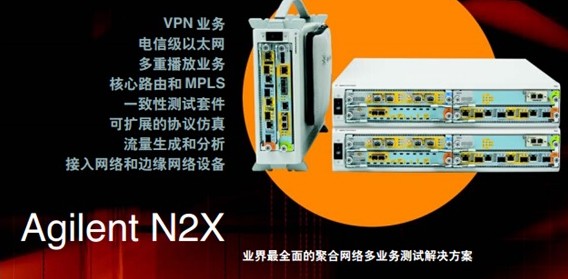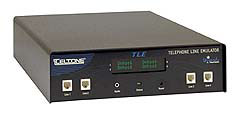
TELTONE TLS-3B-01 PHONE LINE SIMULATOR


Teltone’s TLS-3B phone line lator makes it easy to test or demonstrate equipment that connects to the North American telephone network (POTS), without requiring a live central office connection. Everything you need is in a compact, portable, AC-powered unit.
Accurate, Programmable Central Office Simulator
Like a miniature central office or PBX, the TLS-3B provides accurate dial tone, audible ring, and busy signals to the telephones or other devices connected to it. Many functions of the TLS-3B are easily programmed with a touchtone phone, including phone numbers, off-hook modes, signal delays, test tone frequencies, and line attenuation. The TLS-3B also provides Caller Identification information to both lines, and provides a Visual Message Waiting indicator.
The Solution for Telecom Testing and Demonstration
The TLS-3B makes it easy to perform basic testing or demonstration of telecommunications equipment such as telephones, modems, faxes, caller ID equipment, key systems and PBX installations. Its small size and light weight make the the unit ideal for trade shows and sales presentations.
Designed for your most demanding analog production test or design engineering applications, the TLE gives you the power you need today and in the future, as your needs grow. The TLE consists of a base hardware platform with software modules providing advanced test capabilities. With the TLE you can easily create your own configurations via the Windows interface, and instantly modify programming parameters.
Features
Emulating North American and international networks, the TLE can simulate calls between countries.
The TLE's extensive programmable features simulate network impairments such as echo, noise, and satellite delays so you can find problems before your customers do.
Ideal for production test or engineering environments, the TLE makes it easy for engineers to develop automated, repeatable, and speedy tests, using the built-in script language.
With the TLE you can test analog telecom products and applications for the global marketplace using recognized worldwide standards.
The TLE's upgradeable software modules help you keep up with the changing world of telecom standards. Buy the features you need now and add more as your needs change.
Optional software modules include:
Advanced Test Emulation Automated Test International Calling International Caller ID
Programming and Configuration
TLE programming can be accomplished via Windows-based software or directly into the unit via DTMF commands. Programming features include:
Storage of up to 16 configurations in unit Download new configurations from the PC Dynamic control of all test parameters
Phone Lines
The TLE offers 4 loop start lines with up to 3 programmable phone numbers. Each line is independently programmable for:
4-port or twin 2-port modes
Attenuation Call progress tones frequency, cadence, and signal level
Call timings
DC signaling
Dial tone & stutter dial tone
Dial up test tones
Forced disconnect
Line impedance
Line reversal
Loop current
Network delay
On/Off/Flash hook timing
Ring frequency and cadence
Ringing voltage
Test tone frequencies and amplitudes
Caller ID
The TLE includes caller ID for identification of calling party's phone number with spontaneous call waiting ID (SCWID) and disposition.
Programmable names (CID) Type I (SDMF/MDMF) Type II (SCWID/CIDCW) Visual message waiting
CLASS Call waiting tone & operation Distinctive call waiting Speed dialing Three-way calling
PBX Features
The TLE emulates basic PBX functions including:
Call transfer Call hold Conference calling Hunt group operation "9" access to outside line
Designed for your most demanding analog production test or design engineering applications, the TLE gives you the power you need today and in the future, as your needs grow. The TLE consists of a base hardware platform with software modules providing advanced test capabilities. With the TLE you can easily create your own configurations via the Windows interface, and instantly modify programming parameters.
Features
Emulating North American and international networks, the TLE can simulate calls between countries.
The TLE's extensive programmable features simulate network impairments such as echo, noise, and satellite delays so you can find problems before your customers do.
Ideal for production test or engineering environments, the TLE makes it easy for engineers to develop automated, repeatable, and speedy tests, using the built-in script language.
With the TLE you can test analog telecom products and applications for the global marketplace using recognized worldwide standards.
The TLE's upgradeable software modules help you keep up with the changing world of telecom standards. Buy the features you need now and add more as your needs change.
Optional software modules include:
Advanced Test Emulation Automated Test International Calling International Caller ID
Programming and Configuration
TLE programming can be accomplished via Windows-based software or directly into the unit via DTMF commands. Programming features include:
Storage of up to 16 configurations in unit Download new configurations from the PC Dynamic control of all test parameters
Phone Lines
The TLE offers 4 loop start lines with up to 3 programmable phone numbers. Each line is independently programmable for:
4-port or twin 2-port modes
Attenuation Call progress tones frequency, cadence, and signal level
Call timings
DC signaling
Dial tone & stutter dial tone
Dial up test tones
Forced disconnect
Line impedance
Line reversal
Loop current
Network delay
On/Off/Flash hook timing
Ring frequency and cadence
Ringing voltage
Test tone frequencies and amplitudes
Caller ID
The TLE includes caller ID for identification of calling party's phone number with spontaneous call waiting ID (SCWID) and disposition.
Programmable names (CID) Type I (SDMF/MDMF) Type II (SCWID/CIDCW) Visual message waiting
CLASS Call waiting tone & operation Distinctive call waiting Speed dialing Three-way calling
PBX Features
The TLE emulates basic PBX functions including:
Call transfer Call hold Conference calling Hunt group operation "9" access to outside line




